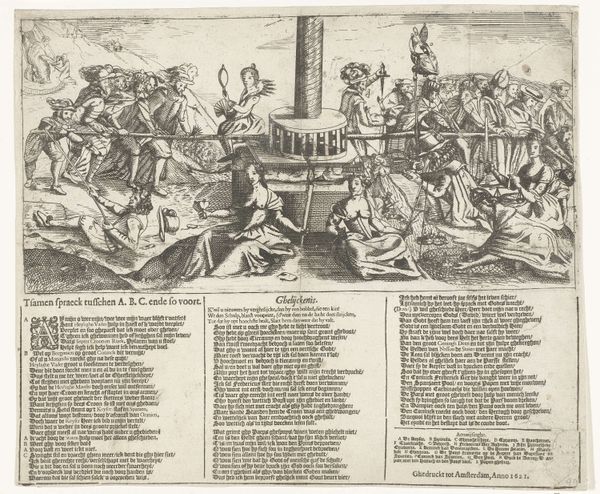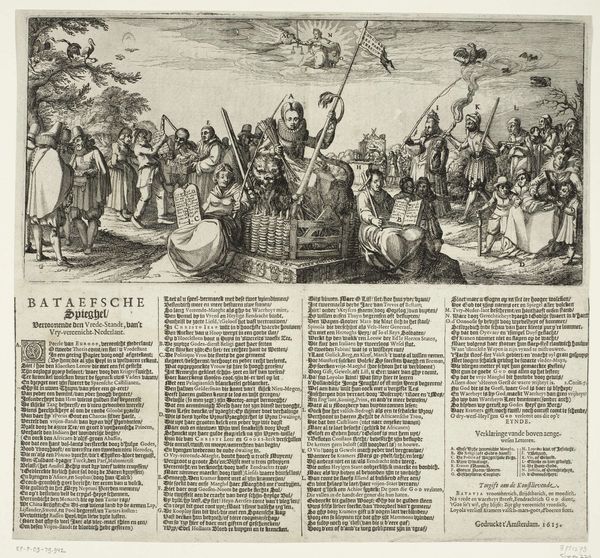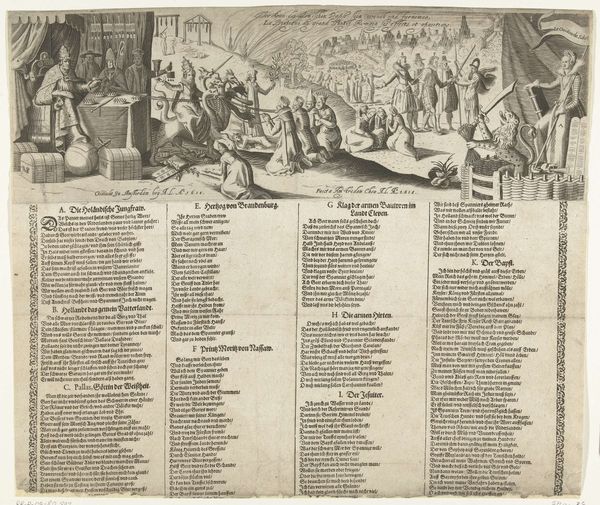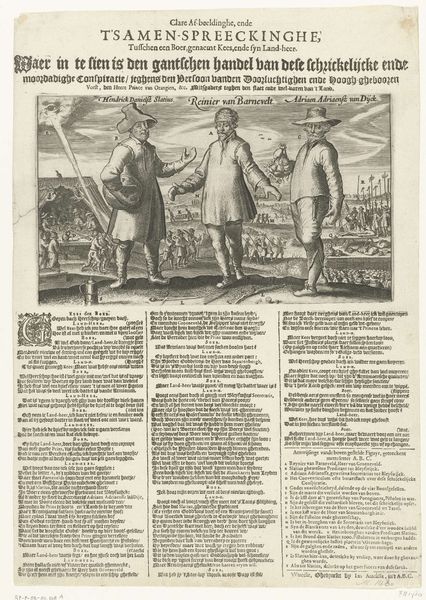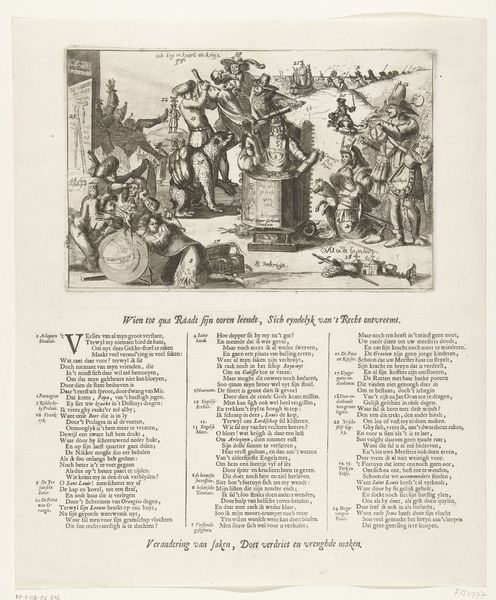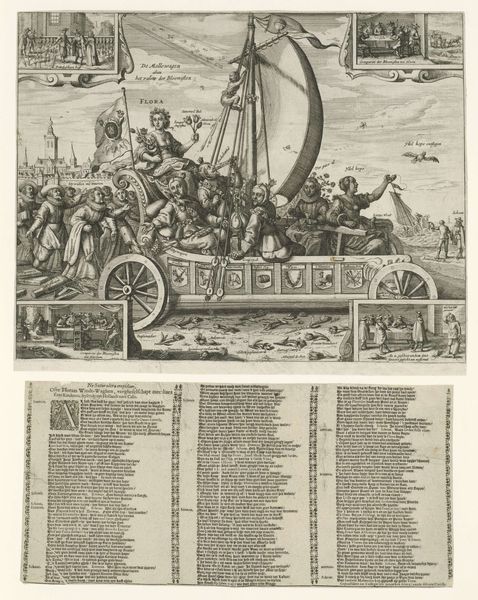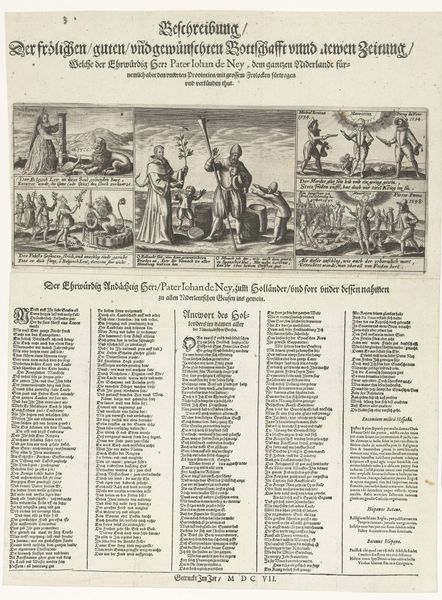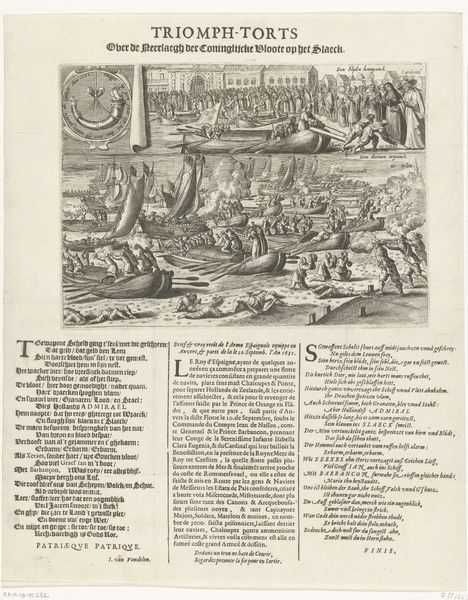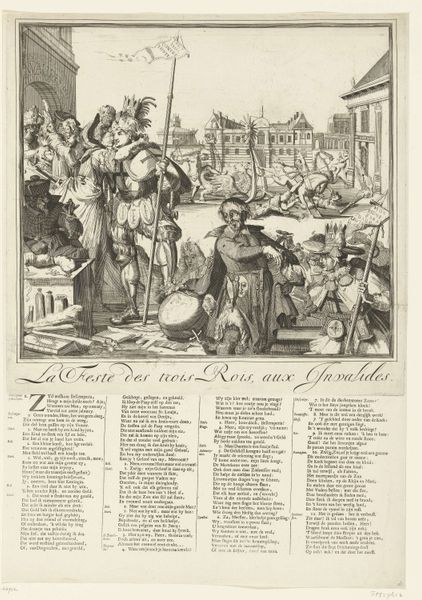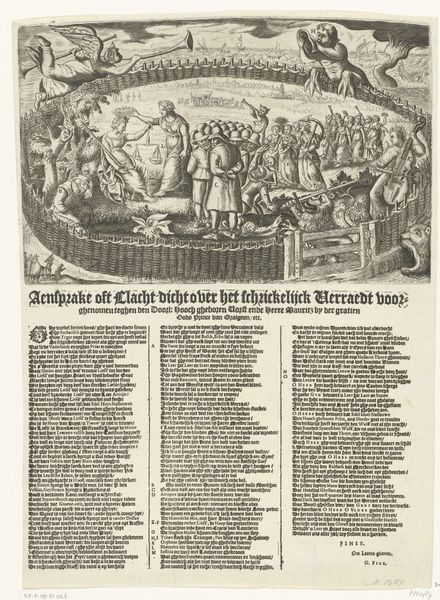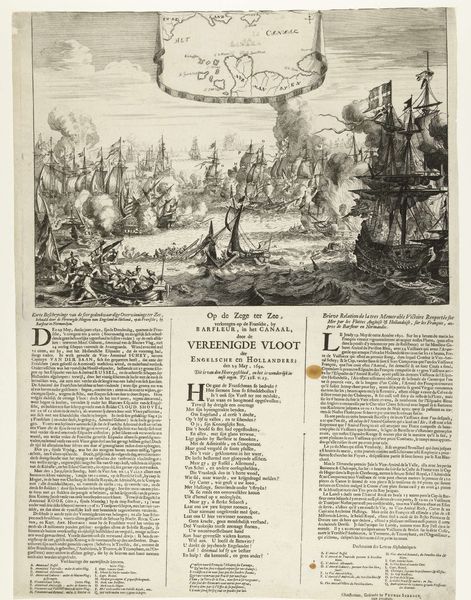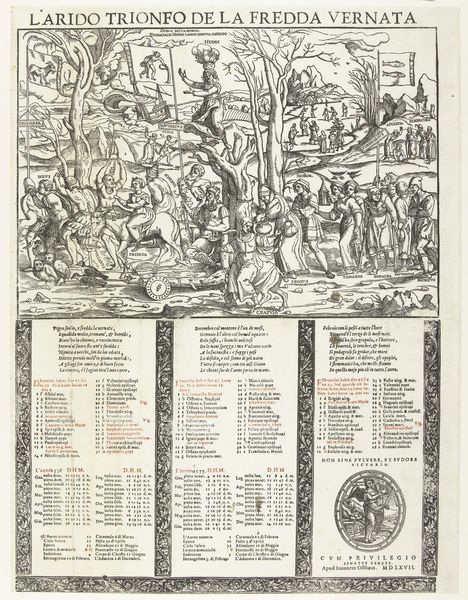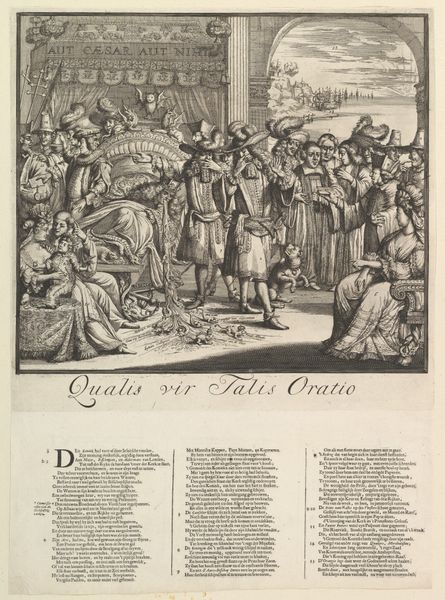
The Game of War (Allegory on the Nordic War), Crispijn de Passe II (1594–1670), engraving, 1656 1656
0:00
0:00
anonymous
Rijksmuseum
engraving
#
allegory
#
baroque
#
pen illustration
#
old engraving style
#
cityscape
#
history-painting
#
engraving
Dimensions: height 388 mm, width 355 mm
Copyright: Rijks Museum: Open Domain
Curator: Isn’t it intriguing how images can encapsulate entire political landscapes? Consider this engraving by Crispijn de Passe II from 1656, aptly titled "The Game of War (Allegory on the Nordic War)." Editor: Woah, there’s so much going on here! My first impression is how…stark it is. It’s not a pretty war scene, it feels quite calculated, cold even. All those little figures going about their business against a backdrop of conflict—it really distances the viewer. It feels…managerial, I guess, or about strategy more than anything else. Curator: Exactly. The piece is a baroque commentary, not just on war but on the commodification of conflict. What looks like a dice game dominates the foreground, with people seemingly gambling over the spoils. Those are all the while sheep milling about, perhaps symbolizing the innocent bystanders caught in the crossfire? Editor: Definitely. It feels like a damning statement, laying bare the greed inherent in warfare. And seeing how deliberately people gamble with sacks and sacks of coin just ahead of farm animals gives it a sort of cynical undertone. Are they pawns, riches or just commodities in the game of power? How much value is truly lost by war? And how do these concepts overlap? Curator: Precisely! The inscription, with titles like "Aurea Libertas," Golden Liberty is ironic. De Passe implies that the pursuit of liberty is intertwined with the harsh realities of war. Those men counting their loot, in the foreground – are they truly free? And that backdrop with troops marching, ships firing, buildings crumbling adds weight to this bleak paradox, Editor: Absolutely, the way the artist contrasts the alleged glory of war with its human cost. You know, the way this era so meticulously engraved scenes always leaves me wondering—what was their real intended audience? Curator: Wealthy patrons and political figures likely. This would be a symbolic and, to some degree, a propaganda piece circulated amongst those directly involved. Editor: Makes you wonder about the echo chamber this engraving might have been part of, reinforcing existing power structures rather than questioning them, right? War distilled as a cold calculation; almost a grim precursor to modern military strategy. Curator: Food for thought indeed. Seeing it through that lens highlights how long these power dynamics have been perpetuated, which brings so much history to this image. Editor: For me too. So next time I encounter an overly polished representation of historical conflict, I'll remember the strategic distancing of Crispijn de Passe, forcing a re-evaluation of my own perceptions.
Comments
No comments
Be the first to comment and join the conversation on the ultimate creative platform.
